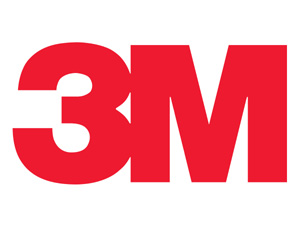When prominent corporations like 3M gain recognition from the Environmental Protection Agency (EPA) for the work they are doing to make positive changes to promote environmental sustainability, they can find themselves in the unique position to set industry-wide standards of best practice.
Whether a Six Sigma professional is just starting out or is already in the midst of a rewarding career, taking a look at the role Six Sigma has played in the triple bottom line performance of 3M draws to light several key points that can positively affect the success of Six Sigma in any environment.
For Six Sigma leaders in the driver seat of such sustainability efforts, increased visibility and professional recognition are perks that can be leveraged for future opportunities.
3M and Six Sigma: Amazing Results
 Since the early 2000’s the 3M company has surged ahead of the pack using Six Sigma methodologies to achieve impressive goals. Their efforts have drawn recognition from the EPA and secured other industry awards. Their most recent sustainability report celebrates the following achievements:
Since the early 2000’s the 3M company has surged ahead of the pack using Six Sigma methodologies to achieve impressive goals. Their efforts have drawn recognition from the EPA and secured other industry awards. Their most recent sustainability report celebrates the following achievements:
- 50% of waste generated is recycled or reused
- 67% reduction in Greenhouse Gas (GHG) emissions in just a little over a decade while sales grew and company expanded
- 37% of all water used was recycled
- 23.8% reduction in volatile air emissions since 2010
In the mid 2000’s the 3M Corporation drew the positive attention of the EPA for its commitment to reducing its impact on the environment.
For over 35 years the company has had a plan in place to reduce its impact on the environment, and Six Sigma methodologies have enabled the company to measure, evaluate and streamline their efforts. In 2007, 3M was named the Industrial Goods and Services Sector Leader on the Dow Jones Sustainability Index. They have been included in the Dow Jones Sustainability Index every year since the index began in 1999.
In addition to this distinction they have won recent recognition from The Best Global Green Brand, ranking 24 in 2013. In 2010 they also ranked 5th on the Booze & Company top ten list of corporate global innovators. In addition to exercising corporate responsibility for the environment, they have also raised over $120 million in donations for organizations and communities around the globe.
Six Sigma Tips from the 3M Case Study for Smaller Businesses
Few organizations have the expertise and resources that a company as established as 3M has. However, there are still several tips that savvy Six Sigma leaders working in smaller organizations can take away from the 3M story.
- Set a goal and stick with it.
The success of 3M has occurred over decades, not months. They carefully chose goals at several levels. Short-term goals keep morale high and stakeholder interest peaked. Long-term goals pay off in profit, savings, industry recognition and kudos. Successful projects need a blend of both.
- Spend time getting the metrics right.
Hiring a skilled consultant or investing in proper training is essential for putting the metrics in place that will document and monitor progress. Rushing in without the right analytics in place may result in not being able to properly record or chart progress over time.
- Let the data lead you toward constant improvement.
Once the organization is trained and invested in the process, forward momentum can take over. 3M has goals set for the next several years, well into the next decade. Stakeholders tend to respond more positively toward a culture that is invested in constant improvement.
- Celebrate innovation.
Surveying stockholders, establishing clear communication standards and setting up a program for internal advancement of in-house innovators helps contribute to long term corporate sustainability.
- Invest in the local community.
Investing in projects that increase worker satisfaction, contribute to local community health and promote education can help build a strong rapport with local leaders. In addition, local involvement can contribute positively to future worker training and loyalty.
Organizations of all sizes are taking a stronger look at their corporate sustainability initiatives and endeavoring to do better. More than ever before, investors, consumers and prospective employees are looking at sustainability track records before making a decision to invest, buy or promote a company’s goods or services, or even apply for a position with the company. And with the ubiquitous use of social media, organizations not doing their part are often taken to task in the public eye.

Sustainability projects are celebrated on corporate web pages and in industry news. Investing in sustainability makes a difference on multiple fronts. Likewise, companies looking to invest in sustainability leaders are seeking to get the most out of their hiring dollars. Project managers and other business leaders looking to work for positive change toward corporate sustainability should be aware of the strong application of Six Sigma methodologies in corporate sustainability success stories across multiple industries.
Tell us what you think in the comments below.
